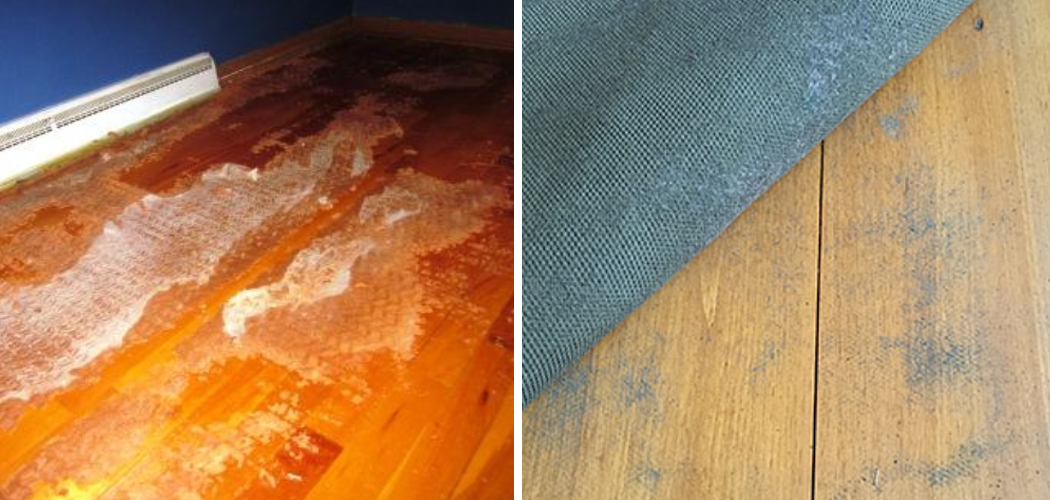Rug pad residue can cause permanent damage to hardwood floors. When the adhesive from a rug pad sticks to your hardwood floor, it can leave behind a sticky residue that is difficult to remove without damaging the finish of your floor. Removing this residue quickly and properly is essential for protecting the integrity of your hardwood floor and maintaining its beauty.
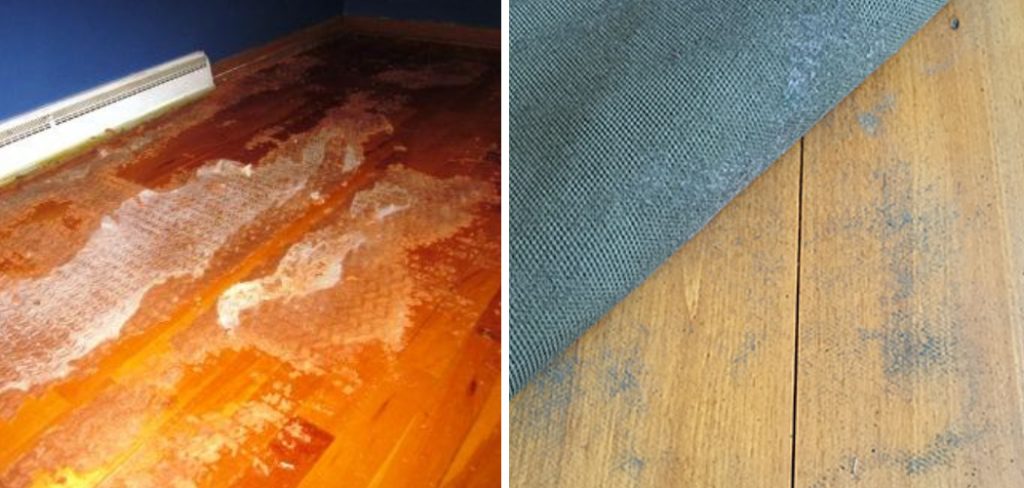
Removing rug pad residue from hardwood floors has several advantages. First, removing the residue helps to protect your hardwood floor from further damage that a sticky and abrasive rug pad can cause. Second, it can help to restore the natural beauty of your hardwood floor and make it look new again. In this blog post, You will learn how to remove rug pad residue from hardwood floors.
Step-by-Step Processes for How to Remove Rug Pad Residue From Hardwood Floors
Step 1: Inspect the Flooring
Inspect the flooring for any damage before attempting to remove rug pad residue from hardwood floors. Check for scratches or other structural issues that may have been caused by the residue sticking to the surface. Use a vacuum cleaner with an upholstery attachment to remove as much debris and dirt as possible. This will also help to loosen the rug pad residue, making it easier to remove.
Step 2: Apply a Cleaning Solution
Mix water and mild dish soap in equal parts and apply to the affected area with a clean cloth or sponge. Use gentle circular motions to work the solution into the residue and allow it to sit for several minutes before continuing. Use a plastic scraper or spatula to scrape off the rug pad residue gently. Work slowly and be careful not to scratch the surface of the hardwood flooring. Be sure to clean off the scraper frequently while you’re working.
Step 3: Vacuum Again
Use a vacuum cleaner with an upholstery attachment to remove any remaining residue. Mix one part white vinegar with two parts water and apply it liberally to the affected area. Allow it to sit for 15 minutes before proceeding. Use a damp cloth or sponge to gently wipe down the area where the rug pad residue was located.
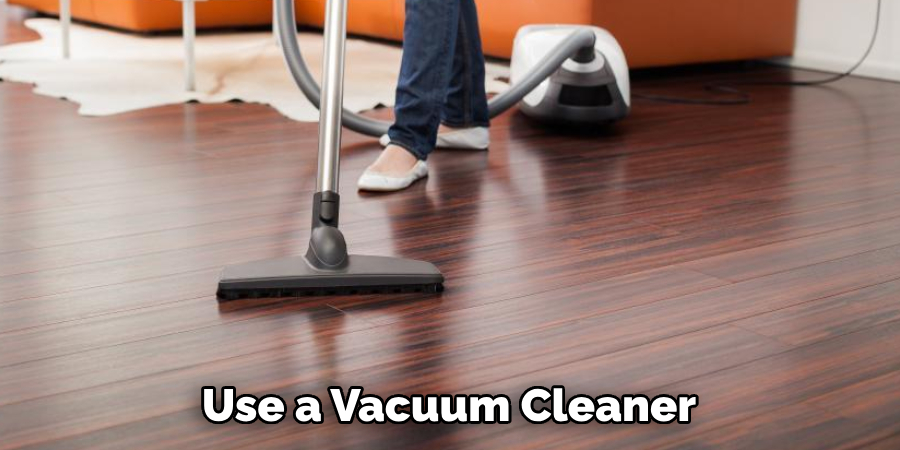
Step 4: Dry the Floor
Use a dry towel or cloth to remove moisture from the hardwood flooring. Carefully inspect the flooring to make sure there are no streaks or spots of rug pad residue left behind. Use a wood cleaner to help restore the shine of the hardwood flooring and to protect it from further damage due to residue. Follow with a wood polish for added protection.
Following these steps should help you successfully remove rug pad residue from hardwood floors in no time. If any steps prove difficult or you have any lingering questions, consult an experienced professional.
Safety Tips for How to Remove Rug Pad Residue From Hardwood Floors
- Wear gloves, eye protection, and a face mask when removing the rug pad residue from the hardwood floor.
- Vacuum the area of the rug pad residue to remove any loose dirt or debris.
- Use a stiff brush and hot water mixed with detergent or soap to scrub away the rug pad residue.
- After scrubbing, wipe down the area with a damp cloth to ensure all the residue has been removed from the flooring.
- Use an oil-based product such as mineral spirits or rubbing alcohol to remove any remaining residue on the hardwood floors.
- Polish or waxing the floors afterward will help protect the hardwood from future stains or damage.
- If you still have difficulty removing the rug pad residue from your hardwood floor, contact a professional for help. This will ensure that your floors are adequately protected during removal.
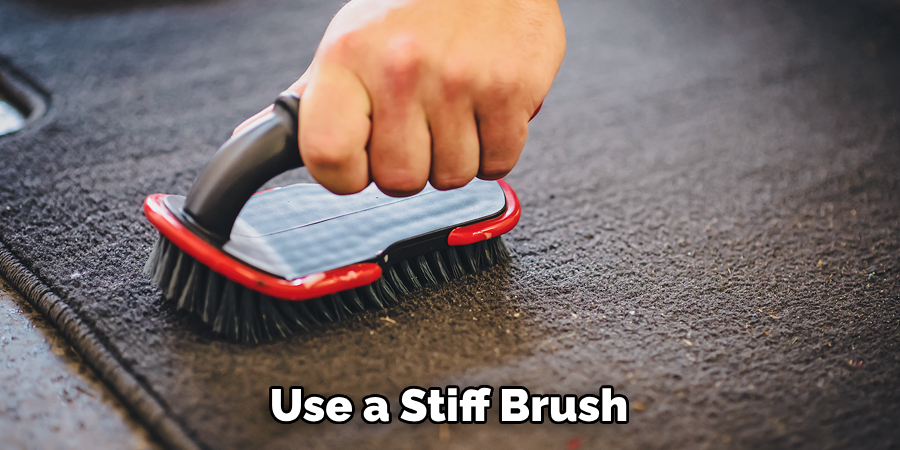
By following these safety tips and precautions, you can easily remove rug pad residue from hardwood floors without causing any permanent damage to your flooring. Remember that properly removing rug pad residue from hardwood floors will ensure a longer-lasting, more attractive finish.
How Do You Know if Your Hardwood Floors Are Covered in Rug Pad Residue?
If you’ve recently moved a rug or other item from your hardwood floors, rug pad residue may have been left behind. Examine the area very closely to determine if you have residue on your floor. If the wood looks slightly discolored or has sticky spots in certain areas, rug pad residue is likely present. Here are some steps you can take to effectively clean up any residual rug pad material from your hardwood floors:
- Vacuum the area thoroughly to remove any surface dust or debris. Make sure you use a vacuum attachment specifically designed for wood floors, as regular vacuum attachments can scratch the wood.
- Fill a bucket with warm water and add a few drops of mild dish soap. Use this solution to dampen a cloth or mop and gently wipe the affected area.
- Rinse the mop or cloth thoroughly with clean water and then use it to dry the area completely. Ensure no soap residue is left behind, which can harm your wood floors.
- Use equal parts white vinegar and warm water to remove any remaining residue. Dip a cloth into the mixture and wring out excess liquid. Then, gently wipe down the affected area and rinse with clean water.
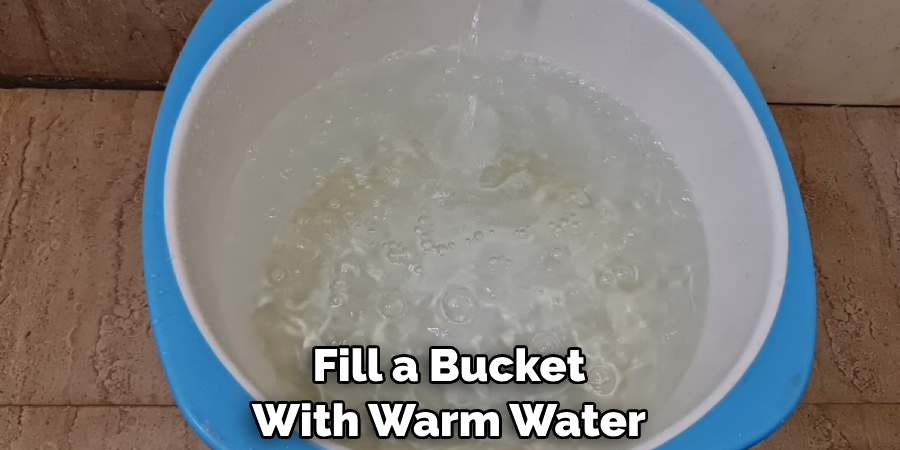
Following these steps can help you effectively remove rug pad residue from your hardwood floors and keep them looking beautiful for years.
Should You Hire a Professional to Ensure That the Job is Done Correctly?
When removing rug pad residue from hardwood floors, it’s important to take the proper steps to ensure the job is done correctly. Hiring a professional to remove rug pad residue can be beneficial for several reasons. First and foremost, professionals have experience dealing with delicate surfaces like hardwood floors.
They will know how to use chemicals and tools to remove the residue without damaging your floors. Professionals also have access to specialized cleaning and restoration equipment to help them complete the job more quickly.
In addition, a professional rug pad removal specialist will be able to assess the severity of the situation and provide you with an accurate estimate of how much time and money it may take to complete the job. They can also recommend the best products to use and advise you on how to prevent a similar situation from occurring in the future. Finally, hiring a professional rug pad removal specialist can provide peace of mind knowing that your hardwood floors are in good hands.
Can You Do Anything to Minimize Potential Damage if the Residue is Not Removed Properly?
If the rug pad residue is not removed properly, there are steps you can take to minimize potential damage. First, avoid harsh chemicals or abrasive scrubbing pads on your hardwood floors. These materials may damage the wood’s finish and can cause permanent discoloration.
Instead, use a damp cloth to blot up any remaining residue. Do not rub or scrub the area, as this may cause scratches. After blotting, use a vacuum cleaner to remove any remaining debris.
You can also use a wood floor cleaning solution with a soft cloth for tougher spots. Finally, protect your hardwood floors by applying a new layer of wax or finish as needed. This will help protect the wood from future damage. These steps can help minimize the lingering effects of the rug pad residue on your hardwood floors.
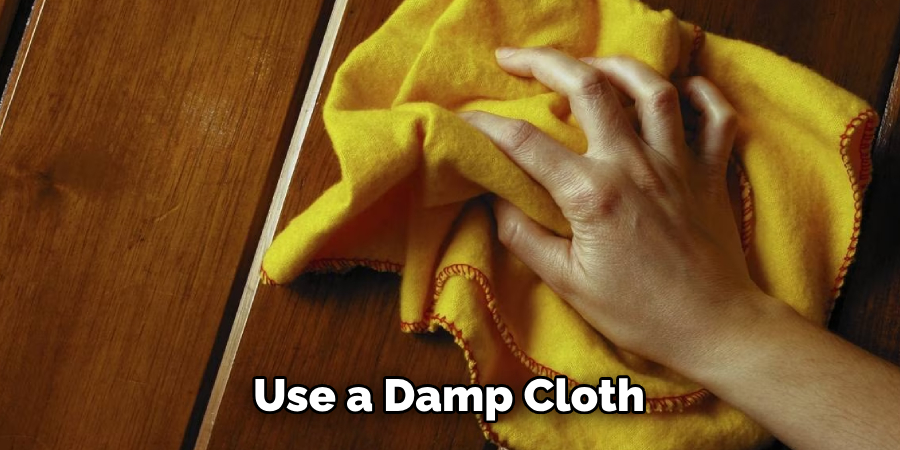
Are Any Environmentally Friendly Methods for Removing Rug Pad Residue From Hardwood Floors?
Yes. Several environmentally friendly ways exist to remove rug pad residue from hardwood floors. A natural vinegar and water solution is one of the best methods for removing rug pad residue. Mix one cup of white distilled vinegar with one gallon of warm water. Use a damp mop or rag to apply the mixture to your floor, then wipe away the residue with a clean cloth.
Baking soda and water is another natural way to remove rug pad residue from hardwood floors. Mix two tablespoons of baking soda with one gallon of warm water, then use a damp mop or rag to apply the mixture to your floor.
Wipe away any excess residue with a clean cloth. Finally, you can use rubbing alcohol to remove rug pad residue from hardwood floors. Rubbing alcohol is an effective and safe cleaning agent for wood surfaces. Simply use a damp mop or rag to apply the rubbing alcohol directly to your floor, then wipe away any excess residue with a clean cloth.
What Are the Potential Consequences if You Fail to Remove the Rug Pad Residue From Your Hardwood Floors?
Failing to remove the rug pad residue from your hardwood floors could eventually lead to permanent damage. The adhesive used on most rug pads is designed to be incredibly sticky and strong to keep the rug firmly in place. This can also cause a buildup of gunk embedded into the wood if not removed immediately. This gunk will create an eyesore and permanently discolor the wood, making it impossible to refinish or restore.
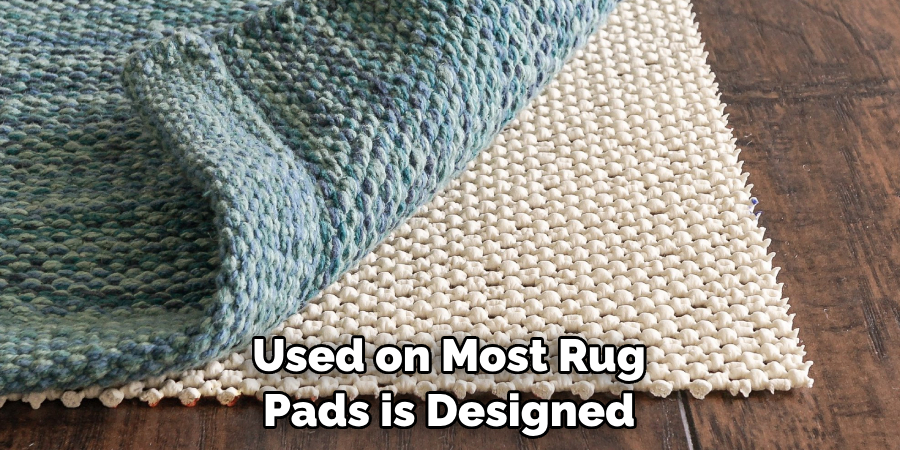
In addition, if you don’t remove all of the residue from the rug pad, it could also lead to damage over time. As the residue accumulates dirt and debris from walking on top of it, it can create grit that will scratch and wear away at the finish of your hardwood flooring. This can eventually lead to permanent damage requiring costly repairs or total replacement. Thus, removing the rug pad residues from your hardwood floors as soon as possible is important to avoid potential consequences.
Conclusion
In conclusion, removing rug pad residue from hardwood floors can be tricky and time-consuming. However, it is possible to do so without causing damage to your flooring. The key is to use the right tools and techniques for the job. Start by gently scraping off as much residue as possible using a putty knife or an old credit card.
Then, follow the instructions carefully and apply a residue remover specifically made for hardwood floors. Finally, use a damp cloth to wipe down your flooring and remove any remaining residue thoroughly. Reading this post has helped you learn how to remove rug pad residue from hardwood floors. Make sure the safety precautions are carried out in the order listed.
